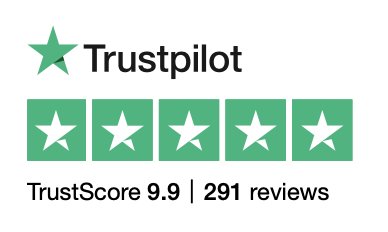Reverse Osmosis Water Filter: Guide to Buying and Choosing
Reverse Osmosis Water Filter: Guide to Buying and ChoosingWater is literally the foundation of life. Since the inception of life on earth, every creature, humans and amoebas alike, has been tied to water in one way or another. About 60% of the human body is made up of water – you drink it every day, and so does everyone else in the world. However, this basic, menial, and programmed task that we do for all our lives perhaps never raises as many questions as it should. Water quality can significantly affect your health and quality of life, yet not nearly enough people pay enough attention to it. Drinking tainted, polluted, or contaminated water can lead to a vast range of health issues that can even cost you your life later down the line. We’re slowly poisoning ourselves with low-quality water, and most people worldwide aren’t doing anything to stop that. Luckily, it’s the 21st century, and there’s already a known solution for almost every issue out there, including water pollution. As the saying goes “The future is already here; it just isn’t evenly distributed” In this article, we’ll be talking all about one of the best ways to purify water and the machine that makes it all happen. Below, we’ll talk about Reverse Osmosis Water Filters, where to buy Reverse Osmosis Water, as well as give you some critical insight into how you can choose the right Reverse Osmosis Water Filter for your specific needs. What Is Reverse Osmosis?Reverse osmosis is a process where all contaminants are removed from the water. Reverse Osmosis, filters can filter out everythingbigger than 0.003 microns which includes almost all the possible pollutants. Reverse osmosis removes manganese, salts, iron, calcium, fluoride, lead, and many other things that can be more than harmful if you were to ingest them. Reverse osmosis water filters are one of the latest developments and advancements in the water purification world, and they’re heralded as perhaps the best way to remove contaminants from water. Not all Reverse Osmosis systems are created equally, though. The process happens in several stages, including carbon prefilter, sediment removal, the Reverse Osmosis membrane, and finally, the polishing filter. Depending on the make, model, and type of Reverse Osmosis system, more stages are added to the process, but this is the most basic incarnation of the system. This process goes on in Reverse Osmosis systems, with the most critical part being the Reverse Osmosis water filter itself. The integrity, quality, and construction of the water filter will dictate its properties, and it doesn’t pay to skimp on one. How Does a Reverse Osmosis Filter Work?
Image Source: Pashminu Mansukhani on Pixabay A Reverse Osmosis water filtration system works on a pretty simple principle. Water passes through a series of filtration stages that remove all of the contaminants from it. Depending on the size and type, there will be anywhere from three to seven stages of filtration. In these stages, all of the contamination, and virtually anything that’s not pure water molecules, is removed from the water. About 99.9% of contamination is removed from the water, leaving you with crisp, fresh, beautiful tasting water. Basically , the process works by pushing water through a semipermeable membrane. This blocks almost every water contaminant such as harmful metals, bacteria, and viruses, and a selection of other contaminants.
Which Reverse Osmosis Water Filter Is the Best?There are quite a lot of Reverse Osmosis filters out there on the market, all with different prices, capabilities, and different build quality. The best water system is the one that fits your needs. When shopping for a Reverse Osmosis water system, you’ll want to look at more than a few metrics. You’ll want to consider whether the Reverse Osmosis filter is right for your specific household based on its quality, price, capabilities, and the number of stages it has. Can You Buy Reverse Osmosis Water?
Image Source: Pixabay You might already be buying Reverse Osmosis filtered water without realising it. This is because some bottled water is simply water that’s undergone the Reverse Osmosis filtration process. Whether it pays off to purchase Reverse Osmosis water is solely up to you. Bottled water one of the highest marked-up products in the world (that and cinema popcorn!)
Many companies that supply offices and workplaces with water dispensers - the ones with large bottles on top - are simply using Reverse Osmosis filtered water. And some bottled water brands are simplys selling RO filtered water - for example Desani. Suppose you’re looking to have a readily available source of Reverse Osmosis filtered water but aren’t too keen on breaking the bank with bottles upon bottles of treated water. In that case, you should consider getting a small-scale system. A small-scale system is a perfect solution, as it filters the water in one source of your home, so you have a near-free source of Reverse Osmosisreverse osmosis filtered water. The Reverse Osmosis process strips the water of any contaminants, but it strips it of minerals as well. In the case of Desani, minerals and non-carbonated sodium are added after the filtration process. The question isn’t when you should buy a Reverse Osmosis water filter, but where to buy Reverse Osmosis water systems – as investing in one is always a good idea. Do I Need a Reverse Osmosis Filter?Do you need clean water readily available in your home? While you might not exactly need a Reverse Osmosis water filter, it’s not a bad idea to have one - assuming it’s in your budget. one. Water isn’t the same in all parts of the world, and sometimes it’s not the same in different parts of the same city. If the city you’re in has a water quality issue, or you’re pretty sure that your tap water isn’t up to health standards – you should probably invest in a Reverse Osmosis system. Many homes around the world have their own filtration system, especially in suburban areas. There are many different kinds of water treatment systems – but Reverse Osmosis filters reign supreme.. They’re by far the easiest and most efficient method for removing any contaminants that might creep into your waterway. While we as human beings need essential minerals to survive, and some are found in water – you’ll be happy to know that we get most of our minerals from our food. Completely filtering the water is a safe practice that doesn’t impact the water’s PH level by very much while blocking harmful contaminants from entering your body. Furthermore, these kinds of water filters are getting more and more popular. You can buy Reverse Osmosis water filters in the UK with a quick Google search. Furthermore, you can buy Reverse Osmosis water filter jugs, as quite a lot of people are doing to make their water cleaner. How Much Do Reverse Osmosis Filters Cost?
Image Source: Pixabay Once you hop on the internet and start researching this subject (which might be what brought you here!), you’ll find a monumental selection of Reverse Osmosis water filters and systems. Some are cheap, some are insanely expensive, and others are relatively reasonably priced. The best ones are probably going to be the ones that are in the mid price range ie not too cheap and not too expensive. You should be able to find good Reverse Osmosis filters without having to break the bank! Initially, the system will wind up costing a fair amount, but once you consider just how much it will help improve your water quality, and - if you buy it - what you’ll save on the cost of bottled water, it will prove to be good value. Remember, the system itself is the most important and expensive part – and it’s mostly an initial investment. Most of these systems will come with a pretty lengthy warranty, so you’ll be fine for the next couple of years (or decades if you’ve invested in a good system from a good company). The only thing you need to replace are the Reverse Osmosis water filter cartridges. The filter system will get clogged after a while, so you’ll have to change them. Replacement filters aren’t nearly as expensive as the initial investment. Reverse Osmosis systems that fit your entire home are impractical. They are too big for most properties. And they’re very expensive - prices can range anywhere from £5,000 to £20,0000, All you should need Reverse Osmosis water for is for drinking. Washing up with it or taking a shower in it is simply going to waste it. Ask us about other solutions for your whole of house water filters. If you’re not looking for a system that will filter all the water in your home, rather just a part of it, such as a sink – you’ll be delighted to know that there are smaller “Point of Use” systems that cost anywhere from $100 to $1000.
The Benefits of Having a Reverse Osmosis Filter
Image Source: Pixabay There are more than a few benefits to purifying your water at home – and that’s precisely why a significant number of homes in the UK and US have water filtration systems built-in. We can’t put all of our eggs in one basket, and while the water from your tap might not be flammable, it’s still recommended that you filter it yourself through one of these systems. These systems aren’t just widespread– they’re hugely beneficial. Below, we’ll outline five of the most prominent benefits of owning a water filtration system in your household. Provides Cleaner Water
Image by BreakDownPictures from Pixabay It’s safe to say that one of the biggest selling points of water filtration systems is that it purifies water. You’d be surprised just how much contaminants find their way into the public water supply, and thus your tap. Most people worldwide drink water from their taps, and if that water is riddled with contaminants such as lead – people are actively investing in their demise. Shockingly, a significant number of countries face water quality issues daily, especially in less metropolitan areas such as the suburbs. Some of the most prominent contaminants that are found in water are:
And that’s just the tip of the iceberg. Depending on your location, you might have more or fewer contaminants in the water than just these – but what seems to be universal is that no public water source is completely free of contamination. Using a Reverse Osmosis water filtration system, you effectively strip the water of all its pollutants, rendering it clean, crisp, and fresher than ever. Saves MoneyDid you know that about 57 billion liters of bottled water were sold in the United States alone? The US isn’t the only offender in this category, as most first-world countries consume bottled water at an increasing rate. Let’s do some math here. An average human being consumes about three liters of water a day on average. To make it simpler, let’s consider a third of the water you drink daily: bottled water. One liter of bottled water costs about $1, which means that you probably spend at least about $730 on bottled water in any given year, and people usually spend way more than that. Not only is a Reverse Osmosis water filtration system for your tap cheaper than that, but it also doesn’t create pollution. Good For The EnvironmentIronically, the most polluted thing aside from air is water, and plastic makes up most of the pollution. Bottled water is mostly bottled in plastic bottles, which means for each year, you produce about 365 non-recyclable bottles of water – which only adds to the global problem that’s only getting bigger. If you care about the environment and care about yourself, you’ll probably be able to make a rational decision and invest in a Reverse Osmosis water filtration system. Not only is this system going to bring you a far higher quality of water, but it also doesn’t pollute the environment, ensuring that our children might see a polar bear one day. Improves Water TastePicture this. You’re a bit buzzed, just came back home from the bar, and you went to doze off to meet the sandman – but your tranquillity and peace are torn up by the thirst that comes after alcohol consumption. The glass of water you have at that very moment might taste like the best glass of water you’ve had in your life, but what if the water tasted like that every time you drank it? Well, suppose you invest in a Reverse Osmosis water filtration system. In that case, you can rest assured that you’re not only investing in the quality of your water, you’re also investing in the taste. The many pollutants and chemicals that find their way into your water either by accident or on purpose change how water tastes. You might also be surprised that water does taste like something – water. Once you rid your drinking water of all the pollutants in it, you’ll discover just how good water can taste all by itself. Low Energy ConsumptionTechnology might have made our lives that much simpler, more automated, and comfortable – but it does come at a cost. We have a device for this … , we have an appliance for that ... but all those devices and appliances cost money. The grid powers almost every electronic device in your home and out of it, and the luxury of electricity comes at a cost. Unless you’re running a roof full of solar panels, you’ll want to save on electricity as much as possible. If you have a water filtration system, you might worry about getting a higher bill at the end of the month. But most systems don't require any electricity. If you have low pressure in your property (which is rare in the UK - only affects about 10% of properties - then you might need a Reverse Osmosis pump - you can ask us more about this. But even a pump wont use much electricity. Reverse Osmosis water filtration systems have an energy consumption grade of A or higher, which means they don’t consume nearly as much electricity as yesterday’s water filtration systems. If you take a look at some Reverse Osmosis water filter reviews in the UK, you’ll find that most praise the Reverse Osmosis water filter machine for its energy efficiency. Easy MaintenanceOne of the most appealing things about this system is that it’s very easy to maintain. Once you purchase the system and get it installed, it requires practically little to no maintenance whatsoever. The only maintenance you’ll have to do is the occasional filter replacement and dusting. These systems are built to last, and as long as you install it properly, replace the filter regularly, and keep it clean – you can rest assured knowing that your Reverse Osmosis water filtration system will be running for a long time. The Bottom LineIf you care about your life, health, and the environment – and can afford it, you’ll not go too wrong investing in a top-of-the-line water filtration system like a Reverse Osmosis water system. Reverse osmosis is by far the best way to filter out any creepy crawlies that might find their way into your town’s water supply. With water filters becoming a more common thing in households worldwide – invest in the best, buy yourself a Reverse Osmosis water filtration system.
|












